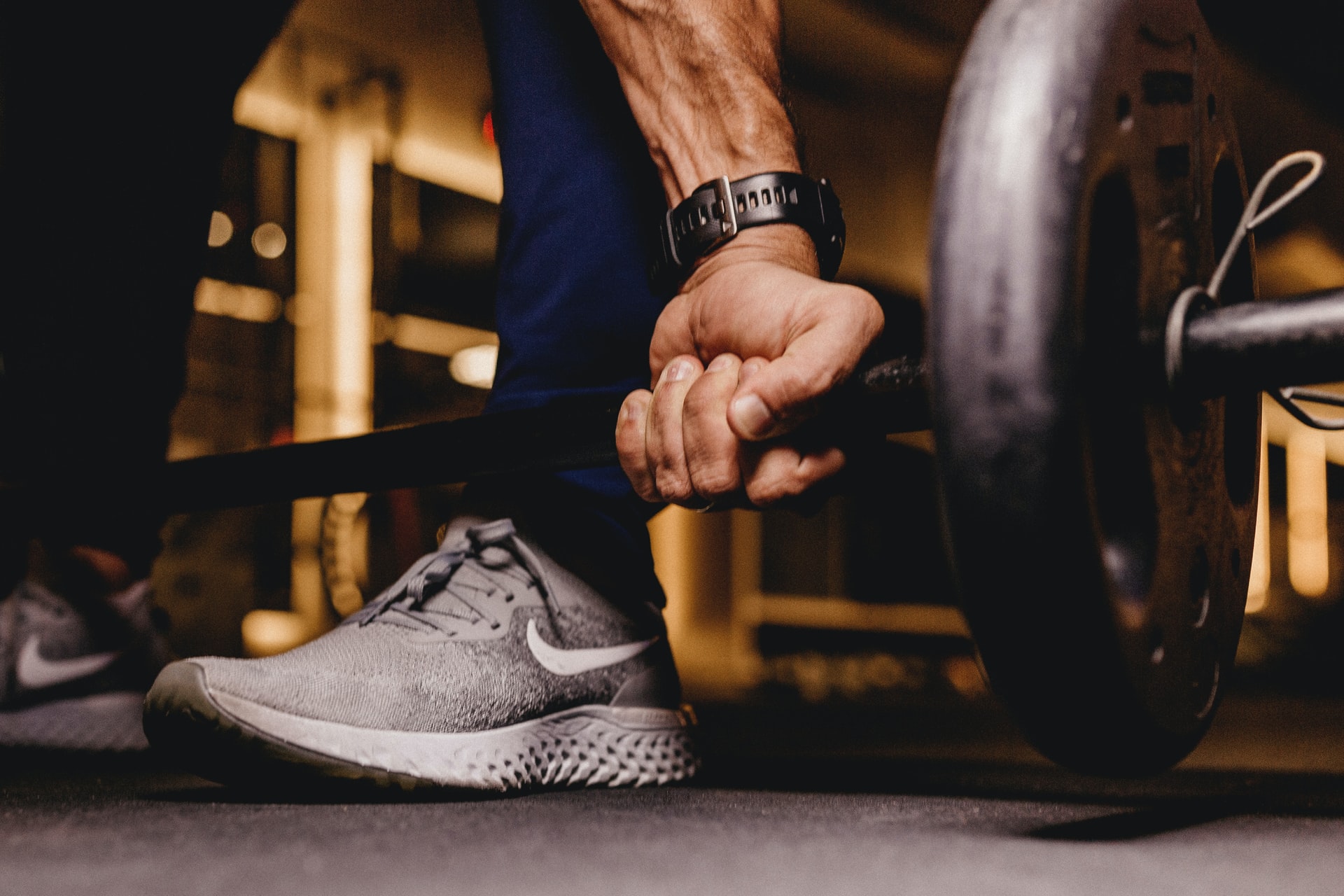Don’t be a dumbbell, make your home fitness smarter
By Christine Hunsaker | Posted April 1, 2021If you’re already devoted to the luxury and ease of living in an integrated smart home, you might have a hard time walking into a freezing garage gym or CrossFit box to pump some old school iron. Fortunately, fitness has come a long way since leotards, Thighmaster and aerobics step classes, bringing health and wellness into a new age. The home fitness market has exploded with cool consumer products aimed to keep you healthy from the comfort of home. Keep reading to check out some cool health and wellness advancements that bring your workout and recovery regimen at home to the next level, no matter your fitness levels or goals.
Entertainment options
First things first, if you’re going to hit the the gym, you need to get your tunes right. At home, this might mean queuing up your favorite playlist over your speaker system. With Control4’s multi-room audio solutions, you should be able to hit your WOD without missing a beat. Music while working out not your thing? Simply tap a button that queues up the news and dials back the temperature while you start the day with a run on your treadmill.
Equipment Upgrades
While you can’t go wrong with classic tools like a selection of dumbbells and a bench, the home fitness market has exploded with sleek, modern gear to help you stay fit in the comfort of your own home. Keep reading below as I highlight some smart fitness gadgets coming out right now to kit out your home with the freshest equipment.Photo by Kelly Sikkema on Unsplash
Digital weight
Instead of buying more weight or doing more reps when your gains outstrip your gear, adjustable dumbbells allow you to ramp up the resistance load with the flick of a switch or turn of a dial. Because these products don’t rely on having an entire set of fixed weight dumbbells, they take up far less space, making them convenient to use and easy to store. Jax Jox digital dumbbells go from 8 lbs. to 50 lbs. with the click of a button, and they track your reps, set, volume, and duration for you from their app. (They also offer adjustable kettlebells, if that’s more your style.)
Instead of using gravity and weight to train against, Tonal uses electromagnetic technology to simulate up to 200 pounds of resistance in their product, which touts itself as a gym and trainer in one. Mounted to your wall like a flat screen, it counts your sets and reps, and critiques your form. It can be purchased with optional accessories like handles or a bench and bar to strength train at home in a versatile, compact way.
Connected, Interactive Equipment & Community
Maybe your home gym environment is missing the energy of boutique classes, enthusiastic instructors, or other community members to compete/commiserate with. If that’s the case, there’s a bumper crop of equipment that connects you to friends, community members, or livestream classes directly to your app or a connected device. Peloton is famous for creating a cult-like community following with guided workouts, killer training playlists, inspiring instructors, and the ability to “ride together” with your other Peloton-addicted friends, but many other platforms are building similar connected home fitness products and services.
However, if you’re craving more variety than a stationary bike or a treadmill can offer, check out other integrated streaming services and gear like the Mirror. Similar to Tonal, it’s a low-profile wall mounted option, (unlike Tonal, it doesn’t have any attached accessories to strength train), that provides interactive workouts from yoga to boxing to bootcamp via an LCD screen. When it’s off, it acts as a regular mirror, which is perfect for fans of minimalist design in their home gyms.
Smart Scales
Old school scales just measure your total weight. While weight does have a bearing on health, it’s not the best single overall indicator for wellness. New smart scales go a step further, using electrical impulses to measure your lean muscle mass, bone mass, water content, and more. Some connect to wearable trackers via Wi-Fi or Bluetooth to correlate data and give you a fuller picture of your health altogether.
Benefits of hydration
Getting enough water is essential for life, and the benefits of hydration are myriad, including helping your joints stay lubricated, your body manage its internal temperature, getting nutrients to your cells, digestion, and more. Harvard Health recommends adults get 30 to 50 ounces a day, cautioning that it’s critical especially for older people who may have less frequent thirst or for people taking medications like diuretics that may cause them to lose fluids. While some of those ounces will come from the water content of the food you eat, most will come from what you drink in a day. Sure, you could just carry a run-of-the-mill water bottle around with you, but several new companies are offering products that help ensure people stay consistently hydrated. The Hidrate Spark comes equipped with sensors that track your water intake and sync via Bluetooth to their app, but it also lights up to remind you to take a sip. (My favorite feature? The app also comes with a “find my water bottle” function so you can track down your forgotten bottle before it gets relegated to a lost and found bin at your gym or help you realize it’s just rolling around the trunk of your car.)
Get some R&R
Rest and recovery are important components of your overall wellness and health. Good workout programs should include rest days to help you prevent burnout, avoid overtraining, and allow your body to restore and recover from your workouts. Additionally, the impact of sleep on recovery cannot be overstated. It affects everything in your day, including stress, mood, coordination, as well as restoring muscle after a workout. Keep reading for some cool new tech products that will help recover and maximize the time you spend counting sheep.Recovery
Want some at-home tools you can use to recover from a workout that’s left you sore? Fitness fanatics may be familiar with run-of-the-mill foam rollers to ease tired muscles. Hyperice took that basic idea one step further with their Vyper 2.0, adding in battery-operated vibrations to increase the therapeutic value. If foam rolling isn’t for you but you still want deep tissue massage, you don’t need to hire a masseuse—simply take matters into your own hands. Created by a chiropractor after his motorcycle accident, the Theragun percussive massager utilizes vibration and force to loosen knots and soothe muscles.
Rest
Catch some zzzzz’s
More is more when it comes to a lot of things but, when it comes to sleep, quality matters as much as getting the correct quantity. Getting good rest can be an overlooked metric for overall health and wellness while the importance of sleep cannot be overstated.
Lighting
Your sleeping environment should be a restful one; an easy way to ensure this is to optimize your bedroom lighting. With Control4 home automation, you can set scenes for bedtime that automatically lower the blinds at sunset and dim the lights to a softer level to help signal to your brain that it’s time to wind down at the end of the day. In the morning, set wakeup scenes to open your blinds to let sunshine in and start the day off right. Integrations like these can be set up to be timed or added to voice commands on your favorite home assistant to make waking up or going to sleep more seamless and convenient.
Temperature
Sleep.org recommends keeping your bedroom between 60-67 degrees Fahrenheit for sleeping. Use a smart thermostat to automatically adjust the temperature to optimize for sleep. You can add an adjustment to your bedtime or wakeup automations so you always have the optimized temperature, whether for sleep or wakefulness.
Sleep Tech
For the sleep obsessed, there’s a plethora of technology available designed to keep an eye on your sleep quality and habits, from wearables and sensors you place on your mattress to headbands that aim to measure brainwave activity. If you’re already using an Apple Watch or a Fitbit, you’re probably familiar with their built-in sleep tracking functionality. However, there’s a couple new companies offering wearable products that are geared more narrowly towards rest and recovery, like the Oura ring or the WHOOP band. The Whoop tries to parse out the data taken from your everyday life and break it into three categories: strain, recovery, and sleep, then gives you an overall percentage grade of readiness for more strain so that you have some feedback about whether you’re ready for a workout or should be prioritizing rest. The Ouro uses a similar system, but their tracker is a minimalist ring with sensors inside the band.
Mattress sensors
If you’re unsatisfied with the options available to you from wearables, maybe consider a sensor that gets placed on your mattress. Similar to wearables, these can utilize movement, respiration, and heart rate monitoring to give you a snapshot of your time asleep and coach you in steps to take to wake better rested.
Brainwave headband
It is worth mentioning that there can be criticism leveraged at the ability of commercially available trackers to properly measure sleep. Critics argue that utilizing heartrate or movement data from embedded gyroscopes is inherently flawed and is, at best, a guess as to how your sleep was in a given night. Many people are happy with the information they offer but for those who want to dive deeper into sleep science at home, there’s new options like Dreem and The Sleep Shepherd that you wear on your head while sleeping to measure brainwave activity. Both headbands use EEG sensors like you’d encounter in a sleep lab, as well as accelerometers to give you a more nuanced view and understanding of how you’re sleeping at night.
Hit the hay
Mattress technology has come a long way since the hay-filled beds of the middle ages or the sloshy waterbeds of the 70’s. Newer mattresses are comprised of a dizzying array of options, all contriving to offer comfort and support while ensuring a good night’s sleep. Start delving into materials, and you’ve got an all-you-can-sleep buffet, from inner springs, latex, memory foam, and more mixed-medium layers than a cake. Techy mattress companies are striving to offer the same kind of sleep tracking as wearables—straight from your mattress—including heartrate, breathing and movement data. Others, like the SleepNumber 360 beds, allow you to adjust the bed’s angle to reduce your partner’s snoring interrupting your sleep. Regardless of your choice, it should allow you to rest comfortably all night without causing pinching or strain to your spine or body.
Whether you want to optimize your smart home for your wellness or take advantage of advances in fitness gear, wearables, or tech, we’re just as obsessed with technology as you are. Drop your contact in the form below if you want to find out what we can offer you to make your home or home gym smarter for you.
We take your privacy seriously and we promise we won't spam you; please see our privacy policy for details. By submitting your information, you are confirming that you are 18 years of age

